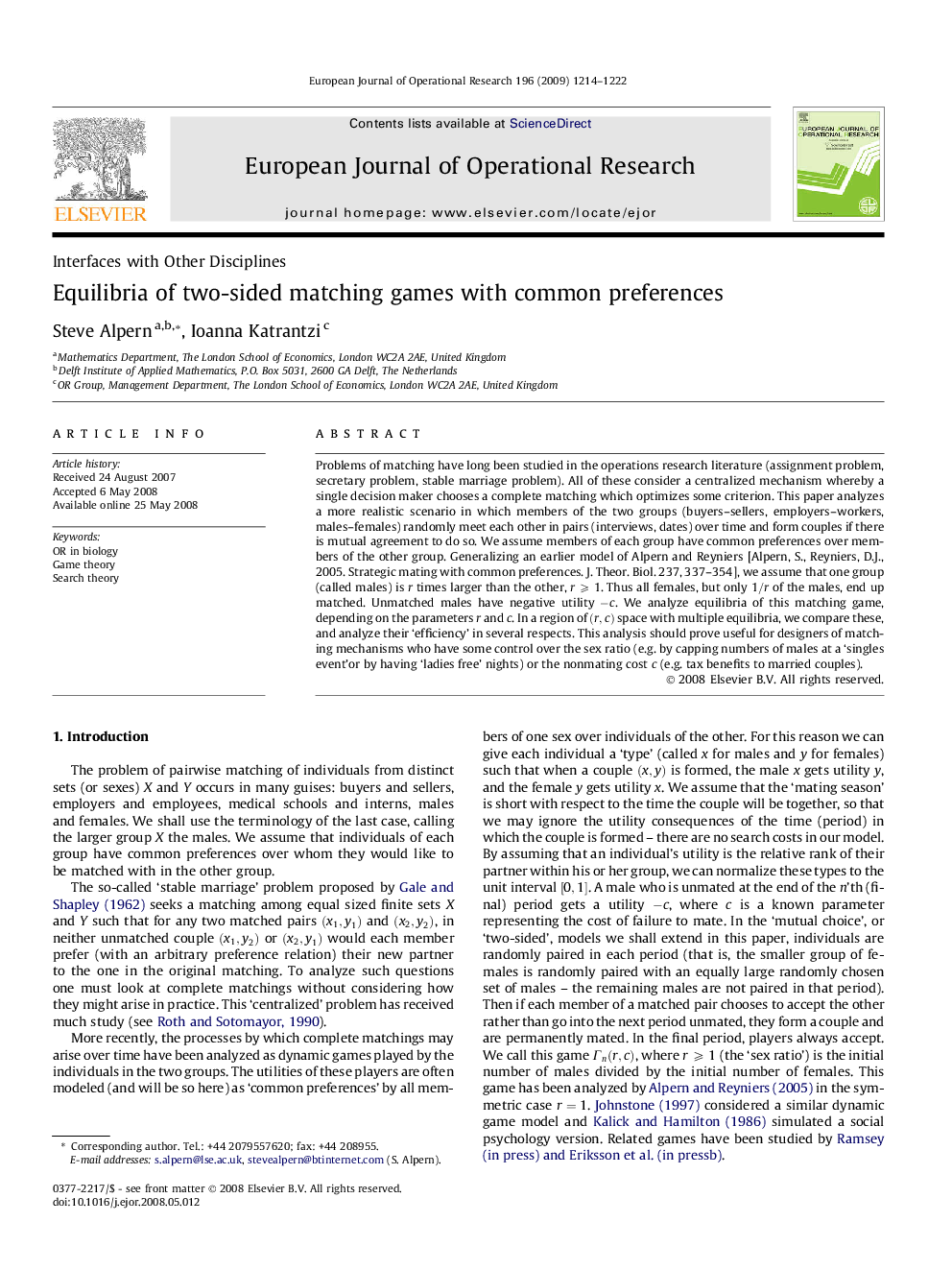| Article ID | Journal | Published Year | Pages | File Type |
|---|---|---|---|---|
| 477274 | European Journal of Operational Research | 2009 | 9 Pages |
Problems of matching have long been studied in the operations research literature (assignment problem, secretary problem, stable marriage problem). All of these consider a centralized mechanism whereby a single decision maker chooses a complete matching which optimizes some criterion. This paper analyzes a more realistic scenario in which members of the two groups (buyers–sellers, employers–workers, males–females) randomly meet each other in pairs (interviews, dates) over time and form couples if there is mutual agreement to do so. We assume members of each group have common preferences over members of the other group. Generalizing an earlier model of Alpern and Reyniers [Alpern, S., Reyniers, D.J., 2005. Strategic mating with common preferences. J. Theor. Biol. 237, 337–354], we assume that one group (called males) is r times larger than the other, r⩾1r⩾1. Thus all females, but only 1/r1/r of the males, end up matched. Unmatched males have negative utility -c-c. We analyze equilibria of this matching game, depending on the parameters r and cc. In a region of (r,c)(r,c) space with multiple equilibria, we compare these, and analyze their ‘efficiency’ in several respects. This analysis should prove useful for designers of matching mechanisms who have some control over the sex ratio (e.g. by capping numbers of males at a ‘singles event’or by having ‘ladies free’ nights) or the nonmating cost c (e.g. tax benefits to married couples).
